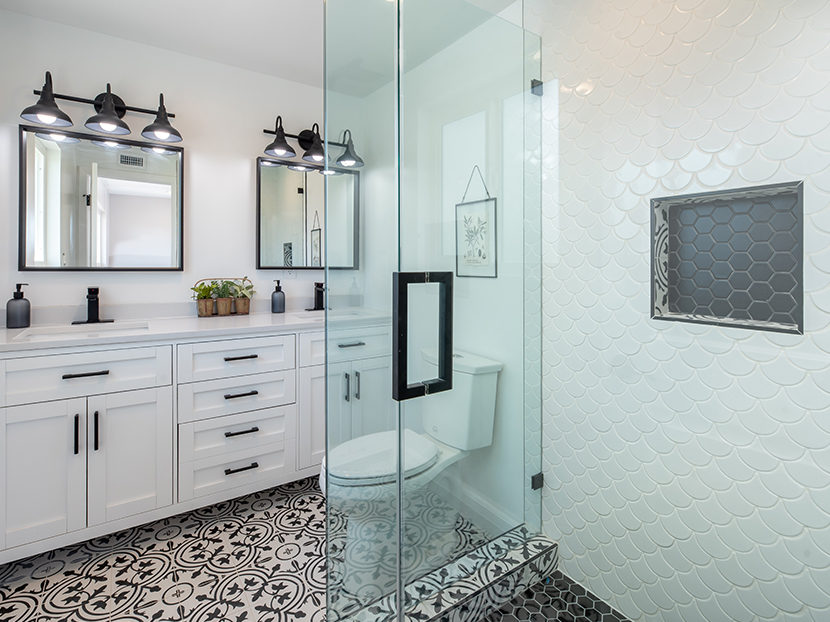Despite COVID-19 Setbacks, Residential Kitchen and Bath Market Still Valued at $130.8 Billion

On June 24, the National Kitchen & Bath Association (NKBA) released the results of its modified 2020 Kitchen and Bath Market Outlook, updated to account for dramatic changes in the industry resulting from the COVID-19 crisis. The report places the value of the residential K&B industry at $130.8 billion, and also includes a consumer study illuminating the latest attitudes toward remodeling.
Consumers cited fewer resources; fear of outsiders coming into the home; limited access to industry professionals; store and showroom closures; less income and fear of job loss as hurdles to home improvement during the crisis. At the same time, however, there were bright spots, including more free time; decreasing expenditures in other areas; an opportunity for DIY work; increased time spent at home and a focus on home projects.
"Our initial 2020 Kitchen & Bath Market Outlook was conducted in late 2019, before the pandemic hit our members and homeowners in the U.S. & Canada," said Bill Darcy, NKBA CEO. "Kitchen and bath spending had been increasing steadily prior to the pandemic at 9 percent in 2018 and 4 percent in 2019. As such, the original report projected a strong 2020, bolstered by an especially bright Q1. While the COVID-19 crisis, unsurprisingly, led to a double-digit decline in spending across all major categories, we are already seeing signs of positive growth as shelter-in-place orders are lifted, and we're optimistic about the industry's long-term health."
NKBA commissioned the highly regarded consulting firm John Burns Real Estate Consulting (JBREC) to field the study. Selected highlights of the updated report include the following:
- As of mid-April, 81 percent of kitchen and bath remodeling projects were postponed or canceled, but homeowners said they plan to reschedule 70 percent of those projects in 2020, an encouraging sign.
- Kitchen spending was more impacted than that of bathrooms, declining by 25 percent compared to 18 percent for master bathrooms and 14 percent for secondary baths.
- Similarly, medium and large projects suffered the biggest losses, with spending predicted to decrease by 22 percent compared to prior expectations. Spending on smaller projects is anticipated to decline only 14 percent.
- For projects that continued through the pandemic, designers were less likely to be used, at a rate of 25 percent compared to 38 percent pre-COVID-19.
The kitchen and bath market tends to recover more quickly than other indicators in times of economic uncertainty, and it is intimately tied to the housing market. A strong housing market is often reflected in healthy remodeling growth, and applications to purchase a home are once again on the rise after a major decline at the start of the COVID-19 crisis. While applications are still below pre-pandemic levels, with mortgage rates 1 percent lower than they were in 2019, there are positive signs for consumer spending ahead.
Additional key consumer insights and spending habits include the following:
- More than one in four homeowners (28 percent) cited limited finances as an impact of COVID-19 on remodeling plans. But some noted unexpected benefits as well, including more time to pursue DIY work (11 percent) and more involvement in the design and planning of projects (5 percent).
- For the 19 percent of remodeling jobs that carried on through the crisis, more used DIY, with only 35 percent saying they hired a professional to do all the work, compared to 50 percent of those with projects completed earlier in the year and 42 percent of those who postponed. One of every three continued projects (34 percent) relied on a combination of DIY and a professional or friend, compared to 28 percent of postponed and 14 percent of completed.
- More than six in 10 homeowners (64 percent) still use cash from savings to finance a kitchen or bath remodeling project. Active projects in mid-April were more likely to be paid by credit card (19 percent) compared to deferred projects (13 percent), and deferred projects were far more likely to be financed with a home equity loan (11 percent, compared to 2 percent of active projects).
- Nearly one-third (31 percent) of Americans say the pandemic has changed the way they use or think about their kitchen or bath. That number increases to 38 percent when at least one member of the household is working from home. When asked if they wanted to undertake renovation work in their kitchen or bath in response to the pandemic, 19 percent of households with at least one member working from home said yes, while 16 percent of all households and 11 percent of those in which no one works from home agreed.
The data presented in this report is compiled from a variety of sources: The U.S. Census American Housing Microdata, National Apartment Association (NAA) Spending, National Association of Realtors, Moody's Analytics, Home Innovation Research Labs (HIRL) data, and JBREC's home improvement estimates and forecasts. In addition, a survey was conducted among 500 consumers to better understand the impact of the COVID-19 pandemic on spending levels.




